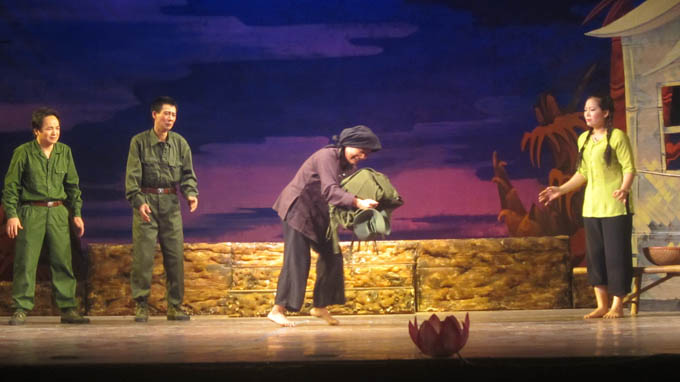Most “tuong” (traditional Vietnamese opera) artists now have to take on other jobs to add to their meager income.
“Tuong” artists have long had considerable difficulty making ends meet, as their art hasn’t been fully appreciated.
For most “tuong” theaters, the plays staged every year struggle to sell tickets. Vietnam Tuong Theater in the north struggles to reach their annual target of 70 plays, from which they are expected not to make losses. Meanwhile, its counterparts in the center and south mostly offer free-admission performances.
According to artist Tran Ngoc Tuan, director of Nguyen Hien Dinh Theater in Da Nang, the reasons for this include the shortage of dedicated, gifted scriptwriters and good scripts, particularly modern-day ones.
As “tuong” is rich in symbolism, for instance, the horse riding movement is symbolized by a rod, and artists find it hard to perform in modern-day plays which feature them riding bikes.
“We can only have good scripts with dedication, decent investment and breakthroughs,” artist Nguyen Gia Thien, deputy director of Dao Tan Tuong Theater in northern Binh Dinh province, said wistfully.
However, “tuong” artists have enjoyed better living standards in recent years, thanks to the different part-time jobs they take on.
One of the jobs is to offer simple performances with drums and lion dances during festivals, like spring festivals or worship sessions at temples and pagodas.
They also give brief performances and welcome guests at the grand openings of companies and shops, and some members get paid over ten million dong (US$474), which is much more than they can earn from their theater performances, when they pour out their hearts and perform to their best.
“There’s no way we can survive on our theater performances alone. I even recite poems and give performances at funerals,” artist Ngoc Quyen from the Thanh Hoa Tuong troupe said sadly.
“Tuong”, also called “hat boi”, is often referred to as classical Vietnamese opera, which is influenced by Chinese opera.



















































